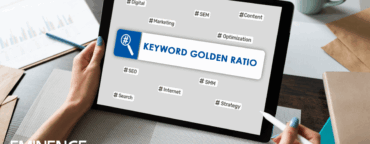Introduction
It’s hard to imagine a marketing strategy today without data. But let’s be honest—collecting data is no longer the challenge. The real question in 2025 is: how do we use it wisely—at the right moment, through the right channel, for the right person? And above all, how do we do it without losing consumer trust?
With third-party cookies on their way out, the rise of artificial intelligence in marketing, tighter data privacy regulations, and new tools like AI-powered content generation, the future of data marketing looks very different from what we’ve known. We’re entering a new era—one that’s smarter, more responsible, and undeniably more human.
At Eminence, we help brands navigate this transformation every day. And what do we see? The brands that stand out are the ones that know how to activate their data intelligently, deliver meaningful personalization, anticipate customer needs without being intrusive, and build relationships based on trust, transparency, and relevance.
In this article, we’ll walk you through the top data-driven marketing trends for 2025—real-world strategies that combine automation, innovation, and ethical marketing. Ready to get ahead of the game? Let’s dive in.
First-Party & Zero-Party Data: Your Best Allies in a Post-Cookie World
Third-party cookies are living out their final days. Google Chrome has confirmed their phase-out in 2025, and with them goes an entire chapter of digital marketing as we knew it. No more shortcuts through external platforms—it’s time for brands to rebuild direct, meaningful connections with their customers. And honestly? That’s great news.
Why? Because we’re entering a more transparent, value-driven era—one where data isn’t grabbed silently behind the scenes, but shared willingly, in exchange for something meaningful. This is where first-party and zero-party data take center stage.
Let’s break it down:
- First-party data is what you collect directly from your audience through interactions on your website, app, emails, or purchase history.
- Zero-party data goes a step further: it’s the information your customers choose to give you—like their preferences, needs, or future intentions. Think quiz responses, product configurators, surveys, and more.
Why is this a top priority in 2025?
Because it’s your data. Data you own, control, and activate without relying on third parties. And because it enables you to:
- Craft highly personalized marketing experiences,
- Segment your audiences with real precision,
- Build customer journeys around trust and transparency,
- And become less dependent on platforms like Google or Meta.
In a world where data privacy and compliance are under the spotlight, these types of data form the foundation of ethical, future-ready marketing.
So, how do you collect it effectively?
At Eminence, we help brands rethink their customer experience to collect valuable data in ways that are engaging—not intrusive. Here’s how:
- Add interactive content like quizzes, product configurators, or gamified experiences to your site,
- Use progressive profiling in forms (don’t ask 12 questions at once!),
- Offer real, perceived value in return—like personalized product recommendations, exclusive access, or tailored promotions,
- And of course, implement clear, user-friendly consent banners that are both visually appealing and fully GDPR-compliant.
Our Expert’s Take:
« You’ve heard the phrase data is the new oil. But in reality, data is the new agreement between a brand and its customers. It’s not about collecting more—it’s about collecting better. And when done right, it becomes one of your most powerful tools for personalized marketing, trust-building, and long-term success. »
AI & Personalization: From Raw Data to Tailored Customer Experiences
We’ve all talked about it. We’ve tested it. Sometimes we’re impressed, sometimes a little skeptical. But one thing’s clear: by 2025, artificial intelligence is no longer just a buzzword—it’s a practical, high-impact tool in modern marketing. Especially when it comes to understanding your customers and delivering truly personalized experiences.
Today, inserting someone’s first name in an email won’t cut it. Customers expect more. They want contextual relevance, seamless communication, and experiences that anticipate their needs. And for that? AI is essential.
What can AI actually do in 2025?
- Automatically segment your audience—not just by age or gender, but by real behaviors, preferences, and subtle signals,
- Predict customer actions: will they buy, bounce, or come back?
- Deliver real-time, dynamic personalization across emails, websites, and ads,
- Even generate tailored content using AI-powered marketing tools like generative models.
Why is this a game changer?
Because we’re shifting from marketing that’s « good enough » to marketing that hits the right person, with the right message, at exactly the right time.
Here’s what that means:
- Less noise, more impact,
- Messaging that actually resonates,
- Customer engagement and loyalty that feels natural,
- A customer experience that mirrors personal guidance—without human overhead.
How we do it at Eminence:
We don’t sell robots. And we definitely don’t throw around AI just to sound futuristic. We build real-world AI use cases tailored to each client’s level of data maturity:
- Lead scoring and churn prediction using machine learning,
- Product or content recommendations based on live user behavior,
- Smart campaign automation across CRM and media,
- And reducing repetitive work for your marketing teams (which, let’s be honest, they’ll thank you for).
Things to keep in mind:
AI is powerful—but it’s not magical, not infallible, and not independent. It needs:
- Clean, structured, and regularly updated data (bad data = bad decisions),
- Human supervision to avoid bias and misinterpretation,
- A strong ethical framework—especially when your AI touches real customer relationships.
Our Expert’s Take:
« AI won’t replace great marketers. But it amplifies their abilities. In 2025, it’s the ultimate partner for delivering personalized marketing at scale—without losing your brand’s authenticity. Faster, smarter, more impactful. That’s the power of AI in data marketing done right. »
Subscribe to our newsletter and gain access to strategic insights, exclusive analyses, and expert tips to enhance your online presence.
Real-Time Marketing: The Art of Showing Up at the Right Moment
You’ve probably experienced it yourself: you browse a product online, leave the site… and minutes later, you receive a perfectly timed follow-up. A reminder. A discount. A recommendation. It’s not magic—it’s real-time marketing. And by 2025, this kind of responsiveness isn’t just impressive. It’s expected.
In an omnichannel marketing world—where customers jump between mobile, desktop, social, and physical stores—being relevant isn’t enough anymore. You need to be relevant in real time.
Because if you wait too long? The moment is gone.
So, what exactly is real-time marketing?
It’s the ability to:
- Detect a customer’s behavior or intent at the exact moment it happens,
- Instantly analyze that signal,
- And trigger the right action—automatically:
* A push notification right after cart abandonment,
* A personalized email minutes after a product page visit,
* A geo-targeted offer when someone walks past your store,
* A dynamic banner tailored to current behavior or profile.
Why does it make such a difference?
Because customer attention is short-lived. You often have a few seconds to react.
With real-time marketing, you can:
- Capture interest before it fades,
- Increase engagement and loyalty,
- Improve conversion rates at precisely the moment the customer is most likely to act,
- Deliver a fluid and seamless customer experience across all channels.
And the best part? You show up just when the customer needs you—without being pushy.
How we bring it to life at Eminence:
We help our clients integrate real-time logic into their data ecosystem at several levels:
- Connecting their Customer Data Platform to capture and act on real-time signals,
- Creating highly responsive marketing automation scenarios in their CRM,
- Powering real-time product or content recommendations,
- Using APIs to connect all platforms—so data flows instantly where it needs to go.
The goal? An orchestrated customer journey that feels natural and helpful—not scripted.
A few things to keep in mind:
Real-time doesn’t mean « blast as fast as possible ». You still need to:
- Identify the right moments to act (and avoid overwhelming users),
- Have the technical infrastructure to support fast, reliable decisioning,
- Build smart personalization strategies behind each trigger.
Our Expert’s Take:
« Real-time marketing is like the perfect customer service moment—it happens exactly when it’s needed, without being asked. In 2025, the brands that master this orchestration are the ones customers will remember—and come back to. »
Data Clean Rooms: Activating Your Data Without Losing Trust
When third-party cookies started disappearing, many marketers hit a wall:
How do you keep reaching the right audience—without tracking them across the web?
One solution is gaining traction in 2025, even if it still sounds a bit mysterious: Data Clean Rooms. Yes, the name sounds techy. But what they enable is simple, smart, and very much aligned with today’s data privacy expectations.
So what exactly is a Data Clean Room?
Imagine a secure virtual space where you and a partner—say, a media platform or a retail network—can combine your datasets to gain insights. But here's the catch:
- No raw personal data is ever exchanged,
- You don't see each other's files,
- And only aggregated, anonymized results come out.
It’s like running a joint analysis without compromising anyone’s privacy.
Why does this matter in 2025?
Because Data Clean Rooms offer the best of both worlds:
- The ability to collaborate on targeting and measurement with high precision,
- While staying fully compliant with data protection laws and maintaining customer trust.
- In short: no risk, no leakage, no sketchy tracking. Just clean, ethical marketing.
How we use them at Eminence:
We help brands explore and implement Data Clean Rooms to:
- Enrich customer insights by securely collaborating with partners (like retailers or media networks),
- Measure campaign effectiveness by matching CRM data with platform performance data,
- Discover new audience segments, all without ever exposing personal information.
- Platforms like Google Ads Data Hub, Amazon Marketing Cloud, Infosum, or even Swiss-hosted clean rooms are now available—especially for companies with strict security or sovereignty requirements.
Before you jump in, a few essentials:
- You need a certain level of data maturity to benefit,
- A good first-party data strategy should already be in place,
- And you’ll need both technical and legal oversight to set things up properly.
Our Expert’s Take:
« Data Clean Rooms aren’t a gimmick. They’re a practical response to the growing trust gap between brands, platforms, and consumers. In 2025, they’re becoming a strategic playground for marketers who want to work smarter—with transparency, compliance, and performance in mind. »
Data Mesh: Giving Data Power Back to the People Who Need It
In many companies, marketing teams have ideas, instincts, even clear opportunities… But they’re stuck waiting for someone from the data or IT team to pull the right numbers.
By the time the answers arrive? The opportunity is gone. Or worse—it’s outdated.
That’s exactly what Data Mesh is designed to solve.
What is Data Mesh, exactly?
It’s a new approach to data architecture that breaks away from centralization.
Instead of one overworked data team owning everything, each business domain (like marketing, product, or CRM) becomes responsible for its own data.
Each team owns its own « data product »—clean, documented, and shareable. Think of it as moving from « ask IT for help » to « here’s the data, ready to go. »
Why is this a big deal for marketers?
Because it makes your team:
- Faster: no more waiting for reports,
- Smarter: access to richer, more relevant insights,
- More autonomous: launch tests, campaigns, and audience targeting independently,
- More collaborative: everyone speaks the same data language across departments.
In short, Data Mesh helps marketing teams become more agile, more empowered, and more impactful.
What we do at Eminence:
When we guide a client through a data transformation, one of the first questions we ask is:
« Can your marketing team access the data they need—without jumping through hoops? »
With a Data Mesh approach, we help brands:
- Identify key data domains: product, acquisition, CRM, etc.,
- Set up lightweight but clear governance,
- Equip teams with collaborative tools like data catalogs, CDPs, and self-service BI,
- And build bridges between marketing, IT, and data—so everyone moves together.
A few things to consider:
- Data Mesh is not a plug-and-play tool—it’s a cultural shift as much as a technical one,
- It requires shared accountability for data quality and usage,
- And it only works if your teams are ready to collaborate and align on common standards.
Our Expert’s Take:
« Data Mesh is like shifting from a siloed organization to an orchestrated one. In the world of data-driven marketing trends 2025, it’s one of the most powerful enablers for faster, smarter decision-making—especially for marketing teams tired of waiting for someone to send the Excel. »
Subscribe to our newsletter and gain access to strategic insights, exclusive analyses, and expert tips to enhance your online presence.
Marketing Attribution: Finally, a Clear View of What Actually Works
We’ve all seen those dashboards: « 80% of conversions came from the last click. »
Really? What about all the emails opened, the ads viewed, the content read before that final click? All invisible.
In 2025, that way of thinking is no longer enough. The customer journey is more complex than ever, and it’s time to stop over-crediting the last step and start looking at the full picture. That’s exactly what data-driven attribution helps you do.
What is data-driven attribution?
It’s a model powered by artificial intelligence and machine learning that analyzes the entire customer journey and assigns value to every touchpoint—not just the final one.
Instead of relying on outdated models like « last-click » or « first-click », it tells you:
- What actually influenced the decision,
- Which channels and messages played a supporting role,
- And what’s wasting your budget without delivering impact.
Why is it essential in 2025?
Because today’s customer might:
- Click a Facebook ad on Monday,
- Read a newsletter on Wednesday,
- Google your brand on Friday,
- And convert on Sunday after seeing an Instagram story.
If you only credit the last click, you miss the full story—and risk misallocating your budget.
With predictive marketing and attribution models, you can:
- Optimize your investments across the right mix of channels,
- Understand true customer behavior across an omnichannel marketing landscape,
- And make better, faster, more informed marketing decisions.
How we help at Eminence:
We tailor the approach to each client’s needs and data maturity level. That can include:
- Implementing multi-touch attribution models in GA4, Adobe Analytics, or other tools,
- Matching CRM data with media platform insights for advanced measurement,
- Building clear, actionable dashboards so you can actually use the results,
- And automating campaign adjustments based on attribution learnings.
Because it’s not just about analyzing the past—it’s about acting smarter in the future.
What to keep in mind:
- Attribution only works if your tracking is clean and complete,
- You’ll need to accept that the data might challenge your gut feelings,
- And remember: attribution is a tool. It supports your strategy—it doesn’t replace it.
Our Expert’s Take:
« Data-driven attribution is like switching from a blurry mirror to a precision lens. In 2025, it’s the smartest way to align your instincts with reality—and to focus your efforts where they truly make a difference. »
Privacy by Design: Turning Trust into a Competitive Advantage
For years, data was treated like digital gold—something to collect, mine, and exploit. But in 2025, the mindset has shifted. Now, data is more like a contract between a brand and its customers.
Today’s consumers don’t just want personalized offers. They want to know:
What are you collecting? Why? How is it being used?
And honestly? That’s a fair question.
What is Privacy by Design?
It means thinking about data privacy not as an afterthought, but as a built-in element of your strategy. From your website and mobile app to your CRM and campaign flows, privacy is embedded by default.
In practice, that looks like:
- No over-collection of unnecessary data,
- No sneaky cookie banners or buried opt-outs,
- And a user experience that feels clear, respectful, and transparent—from the very first touchpoint.
Why it’s not just a legal checkbox, but a true growth lever:
Because in an age of consent fatigue and data leaks, trust is currency. Brands that get privacy right:
- See higher opt-in and engagement rates,
- Build stronger, longer-term customer relationships,
- And stand out as credible, forward-thinking players in the market.
Plus, let’s be honest: staying ahead of regulations like GDPR, ePrivacy, or Switzerland’s FADP is just good business.
How we implement it at Eminence:
We don’t just plug in a consent pop-up and call it a day. We help you integrate privacy into the heart of your data marketing strategy:
- Designing user-friendly, compliant consent banners,
- Optimizing your data layer and server-side tracking for full control,
- Managing user preferences in your CDP or CRM so compliance and personalization go hand-in-hand,
- And guiding you through anonymization, documentation, and governance—without turning it into a nightmare.
What about AI and privacy?
That’s a hot topic. AI models must be:
- Transparent and explainable (no black boxes),
- Free from discriminatory bias,
- And never used to automate decisions that we don’t fully understand.
In short: AI-powered marketing must also be ethical marketing.
Our Expert’s Take:
« Privacy doesn’t kill marketing. It elevates it. It forces us to be clearer, smarter, and more human. And in 2025, brands that lead with trust—rather than patching it in after the fact—will win hearts, minds… and market share. »
Conclusion
Data Marketing 2025 Is Not Just a Trend. It’s a Shift.
Data marketing is entering a new chapter. One that’s more mature, more demanding, and—most importantly—more human. In 2025, having the right tools isn’t enough. What matters is how you use them.
Does your strategy deliver real value? Does it foster trust? Does it respect people’s choices while still offering relevance and results?
The brands that will lead the way are those that:
• Activate their data with precision,
• Personalize in meaningful, respectful ways,
• Predict rather than react,
• And most of all, build strong customer relationships based on transparency.At Eminence, we don’t just talk about trends to stay on top of the buzz.
We work with brands every day to implement real, sustainable transformation—combining deep strategy, smart automation, and ethical practice.








